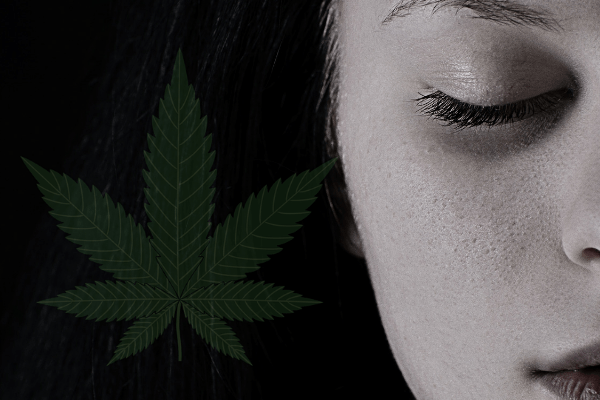Therapeutic Potential
“That’s the thing about depression: A human being can survive almost anything, as long as she sees the end in sight. But depression is so insidious, and it compounds daily, that it’s impossible to ever see the end.” ― Elizabeth Wurtzel, Prozac Nation
A heavy, indescribable feeling. An exhausted and depleted mind. This is how depression can feel. It’s not fleeting sadness or “the blues” and it’s not something you can wish away. And for the over 17 million people in the US who have experienced depression, getting effective treatment can be a matter of life and death.
Depression is difficult to diagnose. According to the Diagnostic and Statistical Manual of Mental Disorders, Fifth Edition (DSM-5), five or more symptoms must be present within a two-week period to be considered a Major Depression Episode. [1] These symptoms must include depressed mood or anhedonia, a lack of interest in normal activities. Additional symptoms may include changes in weight or appetite, sleep problems, fatigue, trouble concentrating, and negative thoughts, including suicidality. [1]
Psychotherapy, which can include cognitive behavioral therapy, can be very effective in managing both short- and long-term symptoms. [2] Additionally, pharmacological therapies that target neurotransmitters (chemical messengers) can also be very helpful. Selective serotonin reuptake inhibitors, or SSRIs, for example, affect the neurotransmitter serotonin by blocking its breakdown, thus leaving more of this feel-good chemical in the brain. [2]
While these medications have been proven effective in clinical trials, many are associated with troublesome side effects, from weight gain and insomnia to more serious effects on cardiac function. [3,4] In addition to safety concerns, some people do not respond to their first (or even second or third) medication and, if they respond, it could take several weeks to feel the effects—this is less-than-ideal when immediate relief is vital to function in everyday life.
The limitations of current anti-depressant medications have caused a recent shift in the field of psychiatry. Since the so-called “monoamine hypothesis” has not proven itself in clinical practice, researchers are looking into other possible pathways involved in the disease. [5] A key network that plays a role in regulating processes relevant to depression, including pain, inflammation, and mood, is—you guessed it—the endocannabinoid system (ECS).
Several components of the ECS like cannabinoid receptor density and endocannabinoid concentrations are altered in the brains of people with depression. [5] Additionally, pre-clinical studies have suggested that increasing activity of cannabinoid receptors can promote antidepressant effects. However, these effects are not consistent—in some cases, cannabis can make depressive symptoms worse. [5]
Long-term studies have indicated that cannabis use may be associated with an increased risk in developing depression. [6] While these types of studies cannot prove direct causal relationships, it is certainly reason for pause, especially since certain cannabinoids and terpenes can induce lethargy, which is not beneficial for people who experience fatigue.
We certainly need more data on cannabis and depression, as we know that so many factors can impact the effects of cannabinoids and terpenes. Depression is complex and challenging to treat. While cannabis holds potential, we don’t have strong, current evidence to support its use as a treatment for depression. Those looking for relief should speak to their doctor and carefully consider the potential benefits and risks.
The winter months can be challenging for people with a history of depression. If you are experiencing symptoms, be sure to reach out for help and call the National Suicide Prevention Lifeline at 1-800-273-8255.
[Image]References
- Tolentino, J.C. & Schmidt, S.L. “DSM-5 Criteria and Depression Severity: Implications for Clinical Practice.” Front Psychiatry, vol.9, 2018, pp. 1-9. (impact factor: 3.161; cited by: 6)
- American Psychiatric Association. Diagnostic and Statistical Manual of Mental Disorders, Fifth Edition. American Psychiatric Association, 2010. (impact factor: NA; cited by: NA)
- Cipriani, A, et al. “Comparative Efficacy and Acceptability of 21 Antidepressant Drugs for The Acute Treatment of Adults with Major Depressive Disorder: A Systematic Review and Network Meta-analysis.” Lancet, vol.391, no.10128, 2018, pp. 1357-1366. (impact factor: 59.102; cited by: 336)
- Wang, S-H, et al. “Addressing the Side Effects of Contemporary Antidepressant Drugs: A Comprehensive Review.” Chonnam Med J, vol.54, no.2, 2018, pp. 101-112. (impact factor: 5.00 (ResearchGate); cited by: 14)
- Micale, V., et al. “Role of the Endocannabinoid System in Depression: From Preclinical to Clinical Evidence.” Cannabinoid Modulation of Emotion, Memory, and Motivation, edited by P. Campolongo & L. Fattore, Springer, 2015. (impact factor: NA; cited by: 9)
- Stoner, S.A. “Effects of Marijuana on Mental Health: Depression.” Alcohol & Drug Abuse Institute, University of Washington, June 2017. (impact factor: NA; cited by: NA)








